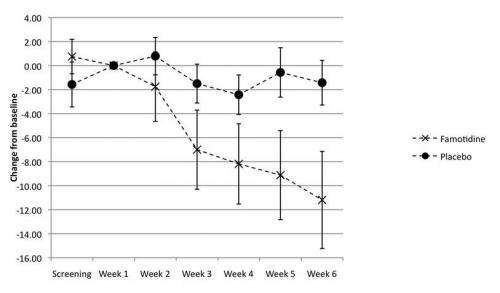New treatment for schizophrenia discovered

A research group led by professor Jesper Ekelund showed that by giving a very large dose of famotidine (200 mg daily), sufficient amounts of the drug are able to penetrate the so-called blood-brain barrier to affect the histamine system in the brain.
Famotidine has been used for the treatment of heartburn since the 1980s, but at regular dosing, famotidine almost does not enter the brain at all, since the brain is protected by the blood-brain barrier. By increasing the dosage five-fold the drug is able to enter the brain and affect the histamine system.
"Already after one week the symptoms of persons suffering from schizophrenia started to decrease and after four weeks of treatment the symptoms had decreased statistically significantly. The patients that participated in the study were also positively disposed towards the treatment," says Ekelund.
Thirty persons suffering from schizophrenia participated in the study. The patients had been on sickness pension for at least five years and were randomly divided into two groups, one which received famotidine and one which received placebo. All of the patients who took famotidine responded positively to the treatment while the symptoms of those who were on a placebo did not change.
Schizophrenia is the most common and severe psychotic disorder, and is the cause of at least half of all psychiatric hospital treatment days. No randomized, controlled trials in humans that test the effect of H2 blockade in schizophrenia have been published so far.
Innovation in psychiatric medication urgently needed
Since 1963, when the subsequent Nobel prize winner Arvid Carlsson showed that dopamine has a central role in psychosis, the so called dopamine-hypothesis has been central in psychosis. All presently available medications for psychosis are based around this principle. Since treatment response is all too often incomplete and side effects common, there is still a great, unmet medical need for medications with other mechanisms of action. Many other signaling substances have been the focus of attention, but so far, the brain histamine system has most widely been regarded as important only with regard to side effects of many psychosis medications.
"Famotidine shouldn't be used directly as treatment for schizophrenia until long-term use of a dose of this size has been proved safe. However, our study shows that the histamine system in the brain offers a novel approach to treating psychosis. This should lead to increased efforts by the pharmaceutical industry to develop medications based on this histamine-based mechanism," says Ekelund.
Famotidine works by blocking the histamine H2 receptor. There are important neurons in the brain that use histamine as their primary signaling substance. These neurons have an important role as regulators of other signaling substances. From animal research, it is known that by affecting the histamine system, one can also affect other signaling substances that are known to be involved in schizophrenia.
The project has already received international recognition. Katarina Meskanen, one of the members of Ekelunds research group, was awarded the Young Scientist Award of the SCNP (Scandinavian College of Neuropsychopharmacology) and the project has been awarded substantial funding (306,000 USD) from the Stanley foundation for follow-up studies.
The research group will replicate the finding through a larger, multinational study in collaboration with Karolinska Institutet in Sweden, where the study is coordinated by professor Jari Tiihonen.
More information: Meskanen, K. et al. A Randomized Clinical Trial of Histamine 2 Receptor Antagonism in Treatment-Resistant Schizophrenia, Journal of Clinical Psychopharmacology , Volume 33, Number 4, August 2013 (online June 2013).














